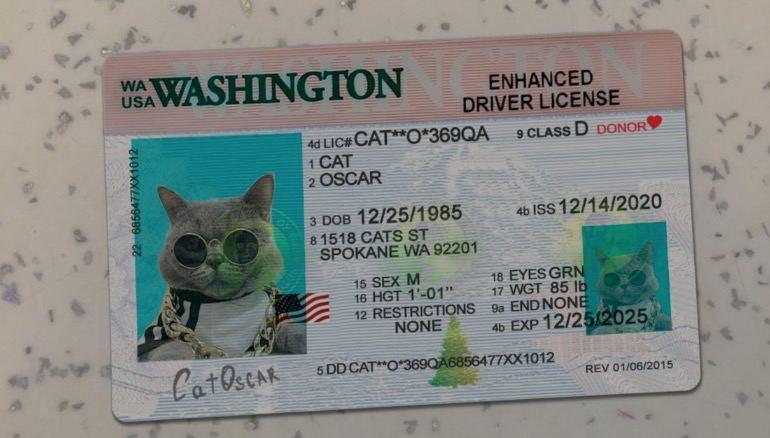In today's high-stakes environment, law enforcement officers must be prepared for any scenario. Realistic training simulations have emerged as crucial tools, offering a safe yet intense way for professionals to hone their skills. These simulations, ranging from high-tech virtual reality to role-playing interactions, provide scenarios that mirror the complexities of real-world encounters. Utilizing resources like the washington drivers license template can significantly enhance the realism and effectiveness of these training modules. Could these tools be the key to better preparedness and more effective response strategies in law enforcement?
The Importance of Visual Accuracy in Training
Visual accuracy in training simulations isn't just about the fidelity of graphics; it’s about creating an immersive, believable environment that mimics the unpredictability of the real world. For law enforcement professionals, the stakes are high. Every decision, every action could mean the difference between life and death. Training with tools that offer detailed, accurate visual scenarios helps officers learn to navigate and respond to situations with precision and confidence.
Why Visual Realism Matters
Visual realism in simulations plays a pivotal role in training for several reasons:
- Improved decision-making: Realistic visuals help trainees make quicker, better-informed decisions by providing clearer context.
- Heightened situational awareness: Accurate representations of environments and scenarios enhance the ability to assess and adapt to dynamic situations.
- Enhanced memory retention: Engaging with lifelike simulations aids in retaining critical information and procedures, making it easier to recall under pressure.
By incorporating tools that emphasize visual accuracy, training programs can significantly elevate the capability of law enforcement personnel, preparing them to face any challenge with expertise and assurance.
Simulation Tools: From Basics to Advanced
As the demand for sophisticated training grows, the technology and methods used to create and implement simulations have also evolved. Today's law enforcement agencies utilize a range of simulation tools to train their personnel, from interactive digital environments to controlled live-action exercises.
A Spectrum of Simulation Technologies
The spectrum of technologies used in realistic simulations includes:
- Virtual Reality (VR): Immerses users in a completely digital environment, allowing for interaction with 3D scenarios.
- Augmented Reality (AR): Overlays digital information onto the real world, enhancing the ability to practice in realistic settings.
- Role-playing: Involves human actors and scenarios, providing emotional and psychological realism that digital simulations might lack.
Each tool offers unique benefits and can be tailored to specific training needs, ensuring that law enforcement professionals are well-equipped for any situation.
Case Studies: Success Stories in Simulation Training
Real-world implementations of simulation training have yielded significant benefits across various law enforcement agencies. Here are a few examples where these tools have led to improved outcomes and performance.
Examples of Effective Simulation Training
- Urban Tactical Training: A city police department implemented a VR simulation program focusing on urban conflict scenarios. The program led to a measurable improvement in officers' tactical decision-making and reaction times.
- Hostage Negotiation Simulations: Another agency used role-playing setups to train negotiators, resulting in a higher success rate in real hostage situations due to enhanced communication and strategy skills.
These cases underline the effectiveness of realistic simulations in preparing law enforcement professionals not just to react, but to think and adapt swiftly and efficiently.
Challenges and Considerations
While the benefits are clear, integrating realistic simulations into law enforcement training programs is not without its challenges. From high costs to technological limitations, agencies must navigate several obstacles to implement these tools effectively.
Overcoming the Obstacles
Key challenges include:
- Cost: High-quality simulations, especially VR and AR, can be expensive to develop and maintain.
- Technology adaptation: Keeping up with rapidly advancing technology requires ongoing training and updates.
- Scalability: Expanding training programs to accommodate more personnel without compromising quality.
Addressing these challenges involves strategic planning, investment in durable technology, and a commitment to continuous improvement in training practices.
Conclusion
Realistic simulations represent a transformative leap in law enforcement training. By adopting these advanced tools, agencies can better prepare their personnel for the complexities of modern policing. As technology evolves, so too will the ways we train our protectors, ensuring they are ready for whatever challenges they face on the job.
The role of realistic simulations in professional training is not just beneficial; it's essential. It equips law enforcement professionals with the skills, knowledge, and confidence to effectively handle real-world challenges. Through continued innovation and implementation of these tools, we can expect a future where law enforcement is even more capable, responsive, and efficient.

